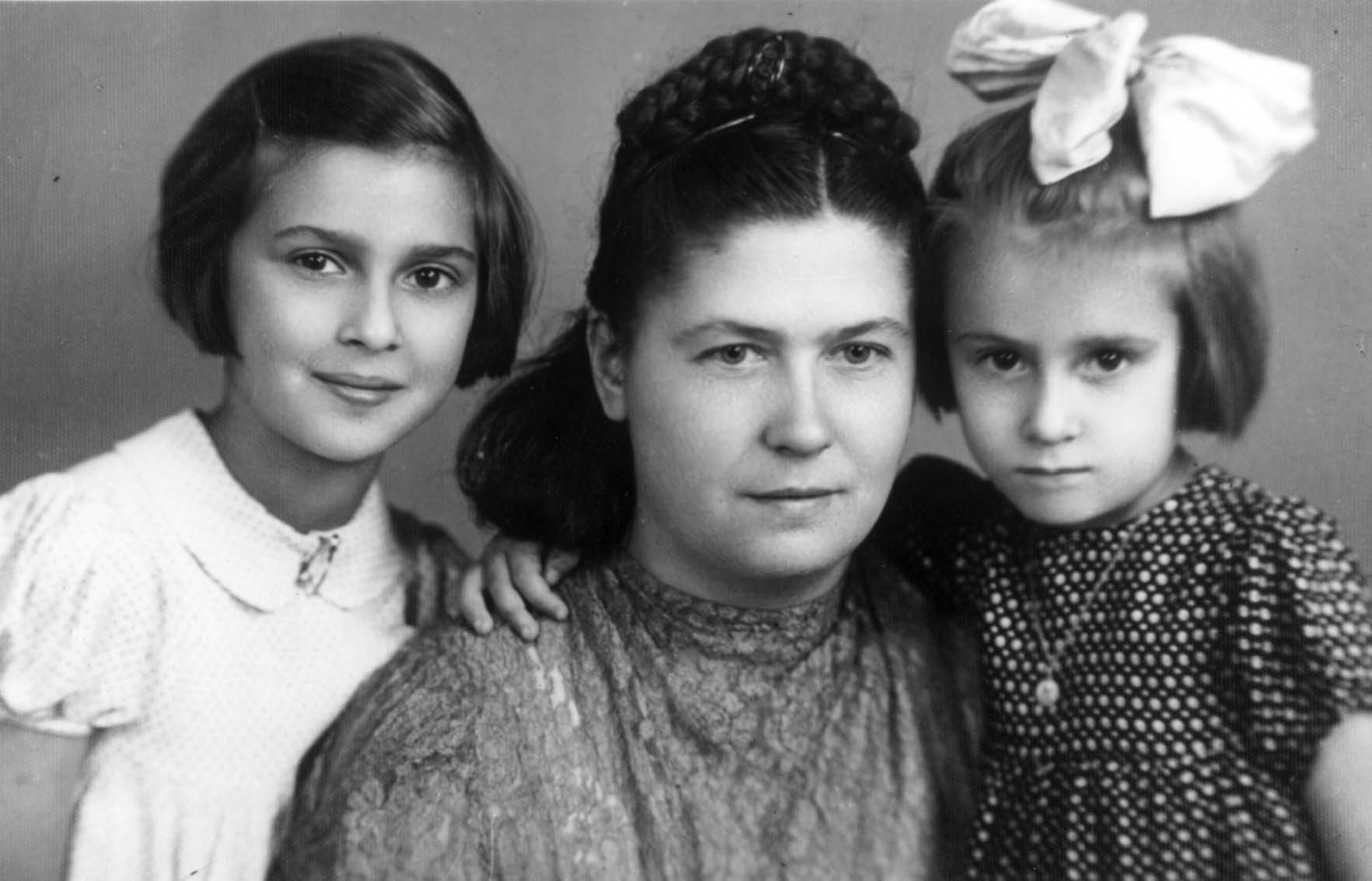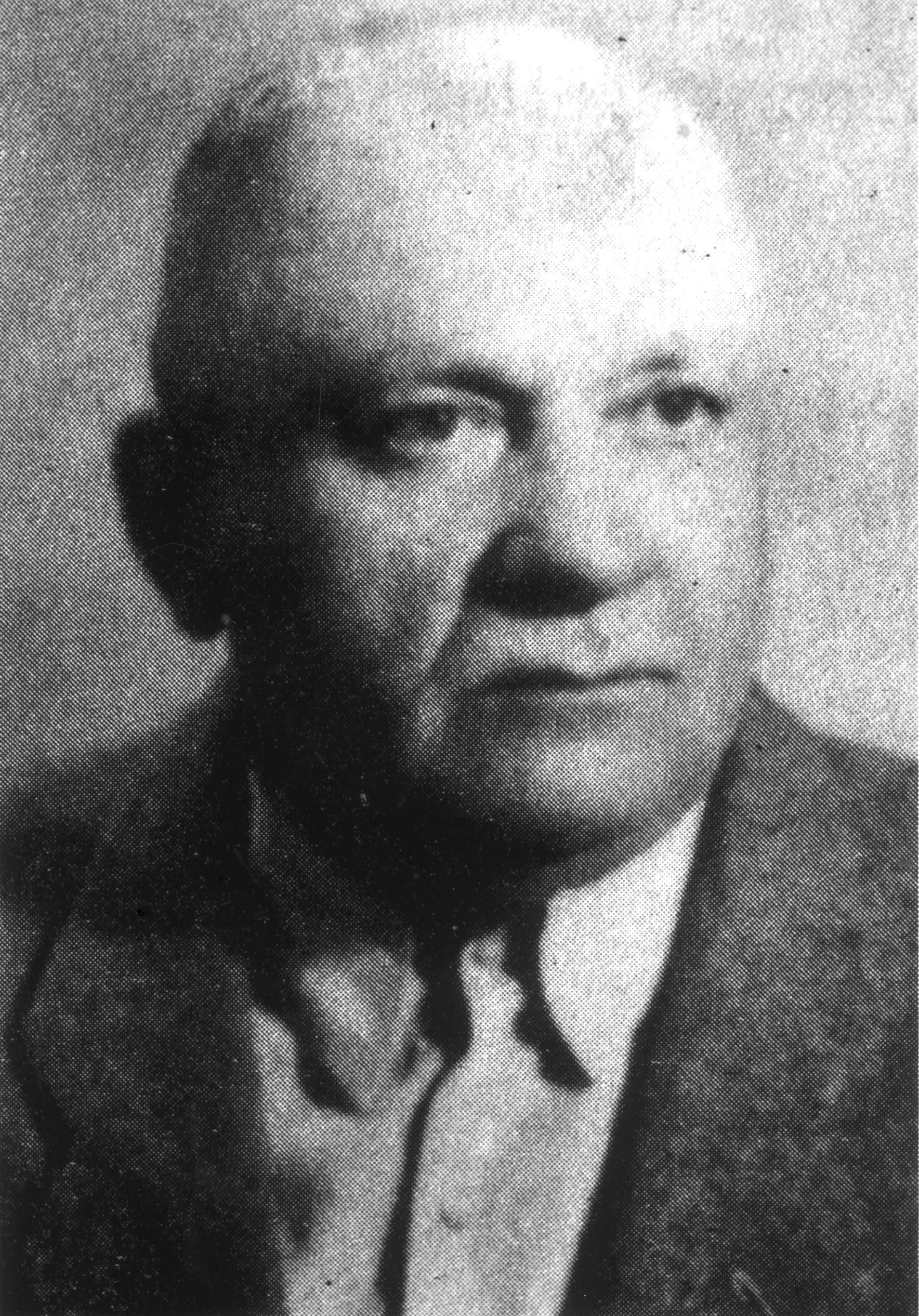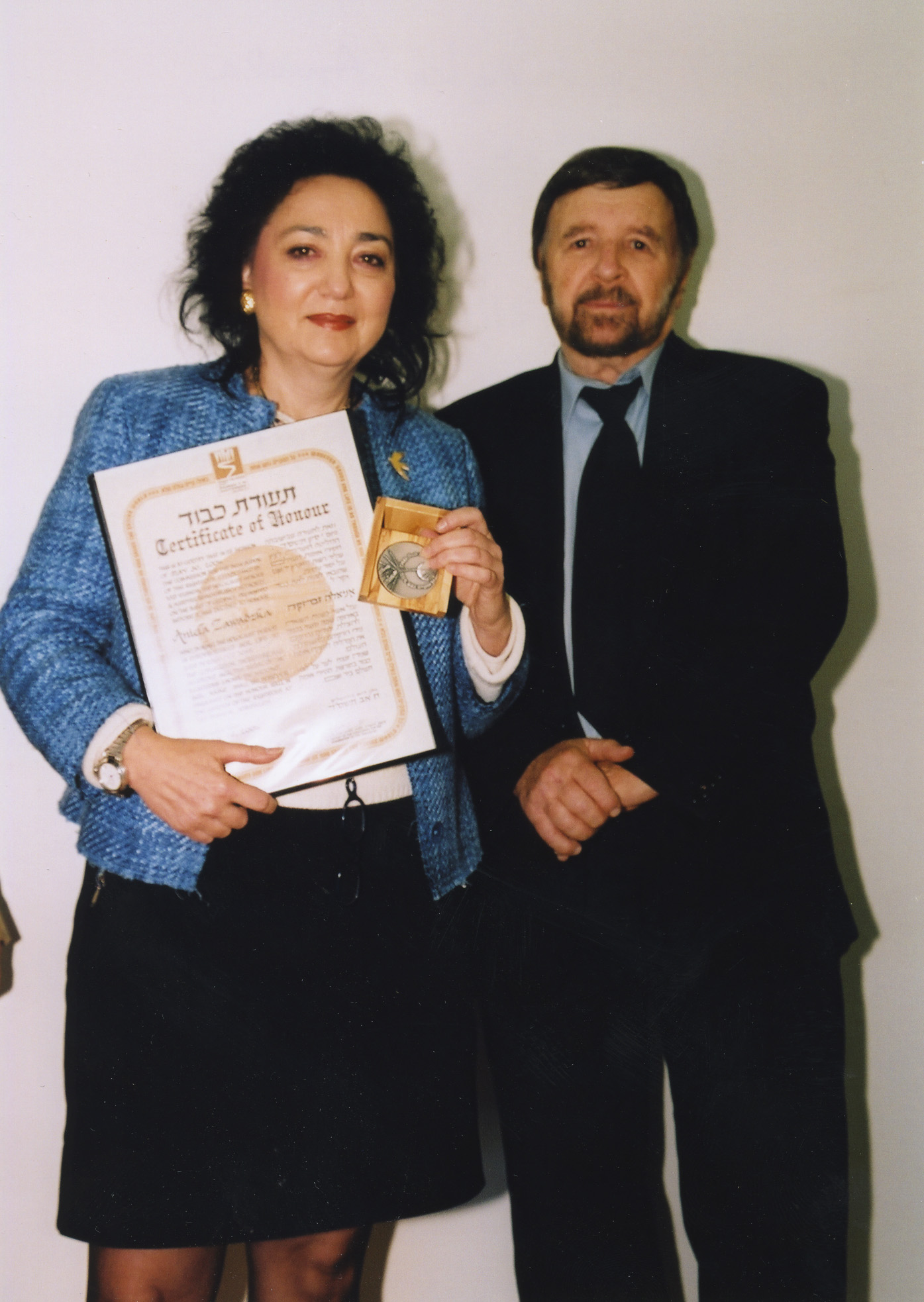Sprawiedliwi wśrὁd Narodὁw Świata

"Kto ratuje jedno życie – ratuje cały świat" – Miszna (1), Sanhedryn 4:5
Do stycznia roku 2017 tytuł "Sprawiedliwego wśród Narodów Świata otrzymało 26,973 osób, w tym 6,863 Polaków. W regionie Zagłębia otrzymało ten tytuł 187 osób (do dnia 2.5.2019).
- Będzin - 36 osoby
- Sosnowiec - 32
- Zawiercie - 29
- Chrzanów - 26
- Grodziec - 2
- Klimontów - 3
- Niwka - 6
- Oświęcim - 18
- Czeladź - 3
- Dąbrowa Górnicza - 8
- Wolbrom - 1
- Olkusz -16
- Trzebinia - 2
- Zagórze - 5
Link do list Sprawiedliwych: Zobacz "linki zewnętrzne"
******************************************************************
IZKOR
******************************************************************
Sprawiedliwi z Będzina – promień światła w ciemnościach.
Jona Kobo (Kotlicki), (kwiecień 2008).
Relacje Sprawiedliwych wśród Narodów Świata opierają się na dokumentach znajdujących się w archiwum Yad Vashem i w "Encyklopedii Sprawiedliwych wśród Narodów Świata" (hebr.)
W-650 rocznicę miasta Będzin chcemy sławić ludzi, którzy w okresie szczytów nienawiści i okrucieństwa odważyli się postępować inaczej.
Chcemy podziękować Sprawiedliwym wśród Narodów Świata, którzy narażali własne życie i życie swoich rodzin, pomagając ludziom prześladowanym, znajdującym się w niebezpieczeństwie śmierci.
Tytuł ten tytuł nadaje Państwo Izrael nie-Żydom, którzy przyczynili się do ocalenia Żydów podczas Holokaustu, okazując niezwykłą odwagę i moralność. Ich jedyną motywacją była miłość człowieka.
Czytaj relacje Sprawiedliwych po angielsku:
The Gates of Church have Opened
Priest Mieczysław Zawadzki
The German army came to Będzin on 4 September 1939.
On the night of 8-9 September German soldiers broke down the entrance gates of the houses adjacent with the High Synagogue in Będzin, threw in hand grenades and ordered everyone out claiming that Jews fired at them from within the Synagogue. Many Jews ran to the Synagogue entrenching themselves in it. They found their death when the Germans set fire to the place. Many others were brought to stand by the church's external wall, where German soldiers ordered them to flee, shooting after them to hit and kill. Those who stayed by the wall were shot on site. A group of Jews fled to the church gates up the hill. The German soldiers fired at them wounding a few. When they reached the church gate, Mieczysław Zawadzki, the church's young priest brought everyone in and instructed the nuns to treat the people's wounds and offer them first aid. Once the treatment was completed he asked the Jews to leave, under the cover of night, through the back gate where things were a lot more relaxed. They were all saved. He explained that if the Germans caught them helping Jews, the nuns and him were going to be killed.
Six year old Tamara
Pająk Genowefa
Pająk Genowefa kept extensive ties with Jews in the Będzin ghetto due to her trade business. She was considered a trustworthy person and had connections with the Germans as well. She used to warn her Jewish friends in the ghetto before the Germans raided the ghetto to find Jews and deport them. Before the deportation action in August 1942, Pająk Genowefa offered her acquaintances that she hides the daughter of her relatives: Henrita Szpigelman. Szpigelman refused and asked that she hides six year old Tamara Cygler. Pająk Genowefa met the child's parents and they gave their daughter to her care. They gave her a letter with addresses of family members in Erez Yisrael and asked her to have their daughter go to them in case they did not survive. Despite risk to her own life she cared for Tamara for nearly three years. She neither asked nor received anything in return for her noble deeds and supplied all Tamara's needs, even when she had to move the child to other families to protect her from informers.
She found out, after the war, that Tamara's parents did not survive. Her heart broken she handed the girl over to her relatives in Israel and for the rest of her life followed Tamara's growth and fate as if she were her own.
Dressed in a girls cloths
Pałka Władysława
In June 1943, a short time before the wiping out of the Będzin ghetto, Mr. Krakowski decided to save the life of his eight year old son, Lezer. With the help of a Polish acquaintance he managed to take his son across to the Arien side of Będzin, into Pałka Władysława's care. She was a helper in their house and Lazar had known her since birth. She took care of him devotedly and hid him in her house for a whole year and taught him the Catholic prayers. Whenever they went on the street he wore a girl's clothes. The doorman at the building was the only one who knew of her secret. She got anonymous threatening letters for hiding a Jewish boy in her apartment. When his life was endangered she supplied him with a Catholic birth certificate and sent him to her relatives in the country, where he was introduced as a relative from Warsaw. He stayed there like one of the family until the end of the war. Pałka Władysława went to the village after the war was over and took the boy back to Będzin, where she reported the child's whereabouts to the Jewish institutions, refusing to have him go with anyone other than his family. His father was killed in Auschwitz, but his mother survived. Pałka Władysława handed him over to his mother and the two of them immigrated to Israel. She was an observant Catholic and all she did, for which she asked for nothing, was the result of her deep religious faith.
Strictly prohibited: Relations with Jews
Grzybowski Jerzy
In the spring of 1944 Grzybowski Jerzy worked as a construction worker in the Blechhammer camp, which was one of the secondary camps of Auschwitz. Hundreds of prisoners were sent from Auschwitz in April 1944 to the Blechhammer camp. Among them was Samuel Montag from Będzin. Despite the strict prohibition to be in touch with Jews, Grzybowski Jerzy became friends with Montag and expressed his wish to help him. And indeed, Grzybowski Jerzy, who went on leave from the camp from time to time, established contact with Montag's family who were in Będzin under false identity. They sent food for Samuel Montag with him. Grzybowski Jerzy started to plan Montag 's escape and brought him regular civilian clothes. In September 1944, the two of them took advantage of the chaos in the camp following the Russian planes bombarding the camp and escaped to the nearest forest. Montag changed his prisoner's gear with the clothes his friend had brought him. They reached Będzin a few days later. The two separated only after Grzybowski Jerzy led Montag to his relatives.
Montag emigrated to Germany after the war and kept an intimate contact with the man who saved him: Grzybowski Jerzy
For Free
Józef Gawlik
Hildegarda Gawlik
Before the war, Josef Gawlik was a merchant in the city of Piekary Slaskie, in Upper Silesia. He had commerce connections with Terner who lived in Będzin. In the summer of 1943, before the complete annihilation of the Będzin community, Terner shared his deep distress with Gawlik and asked for his help. Gawlik consulted with his wife and despite the grave danger they would be in for helping Jews they decided to take care of Terner's daughter Renia, for free. She was smuggled from the ghetto and upon arriving at the Gawlik family was introduced to the people present as a relative. They took care of her every need devotedly even after the area was freed in January 1945. She stayed with them until her surviving mother came for her, a half a year later.
After the war Renia stayed in Poland, where she got married and became Reneta Kolodziazska and kept a friendly contact with the daughter of Hildgarda and Josef.
The Polish doctor was sent to Dachau, the camp in Germany
Kosibowicz Tadeusz
On the night of 8-9 September 1939 the Germans burnt the Będzin Great Synagogue. Many Jews who ran to it for shelter died in the fire. Many others were shot by the Germans. A group of Jews, among them Yitzchak Turner, ran amok to the church gates up the hill. A few of them were wounded by German fire. While running, Turner was wounded in his left arm. The bullet that entered at the elbow went out through the shoulder. Young priest Zawadzki opened the gates for the escaping Jews and made sure their wounds were taken care of. After being treated they left the church through a back gate and found refuge in the old Jewish cemetery that was down the hill from the church – the Podzamcza. Yitzchak Turner, with an open wound in his left arm, lay there with the others until dawn.
He went to the hospital on his own to get the right treatment. The entrance to the hospital was blocked by German soldiers who announced that Jews and Polish soldiers were going to be denied treatment.
Dr. Kosibowicz Tadeusz, the hospital's head doctor, went out to Yitzchak Turner and took him to his ward to be treated. He told the German soldiers that it was only an emergency treatment. Turner met more Jews that were injured that night. Dr. Kosibowicz Tadeusz hospitalized him for two months and personally supervised his treatment. Under his instruction, a group of Jews was hospitalized for a similar length of time. The Gestapo found a broadcasting radio on his ward, found out that he hid a Polish general and helped Jews there for which they arrested him and he was brought in for questioning to the Gestapo Offices. They meant to execute him by an order from seniors changed his fate and he was sent to Dachau, the camp in Germany. He was sent to Sachsenhausen and Oranienburg in Germany, Majdanek, in Poland and Gross Rosen in Germany. Dr. Kosibowicz Tadeusz returned to his home in Będzin after the war.
Yitzchak Turner made Aliya to Israel.
"No Prayer – no Breakfast"
By Dr. Mordechai Paldiel
"Yad Vashem – Jerusalem" 36th edition. 2005.
Aniela Zawadzka - Swetzer
Aniela's story dates back to before the Second World War. She was a maid with the Marin family in Będzin. After the Germans built a ghetto in the city she went to live in a deserted house and waited for news from the Marin family. On 3 August 1943, the members of the Marin family, along with other Jews to be deported to Auschwitz, were waiting at the local train station. Responding to their parents insistent pleading the two Marin children, Saul aged 10 and his sister Dina, aged 8 escaped from the station and found their way to Aniela's house, where they joined their cousin, Wolf Swetzer who was already in hiding there. Aniela succeeded in hiding the three Jews under her care, even from her own family, for a year and a half, until the Russians freed the area in January 1945. To feed them she served as cook in a clothing factory for the German army. She secretly found a way into the demolished ghetto, where according to instructions the Marin parents had given her, she found hidden jewelry and gold coins that she used to bribe whoever needed to be bribed so as not to inform on herself and the people hiding in her house. During the long period in hiding Aniela was like a mother to the two children, cared for all their physical needs and cheered them up.
"There aren't enough words to describe her noble and humanitarian behavior," says Dina. "And the chances she took to save the two Jewish children and her future husband." Wolf and Aniela did indeed get married after the war and moved to live in Italy with Felicia, their little baby girl. Shaul and Dina, who were orphaned, went to Israel.
Professor Shaul Marin is one the most prominent ophthalmologists in Israel. He remembers arriving at Aniela's house:
"I was very angry with God for allowing such atrocities to happen, therefore, I threw my Kipa- skullcap – and wouldn't touch my cousin's Sidur - prayer book. Two days after our arrival at her house, Aniela, a keen-eyed observant Catholic Pole, asked me if I had prayed. Her response to my negative answer was:"No pray – no breakfast." She made me memorize "Mode Ani – the Jewish morning prayer of thanks to God that one says upon waking up in the morning. She made me say it every morning of all the mornings I was at her house."
Artykuły powiązane
Linki zewnętrzne- Lista Sprawiedliwych z Będzina – kliknij tutaj
- Lista Sprawiedliwych z Sosnowca – kliknij tutaj
- Lista Sprawiedliwych z Zawiercia – kliknij tutaj
- Lista Sprawiedliwych z Chrzanowa – kliknij tutaj
- Lista Sprawiedliwych z Grodźca – kliknij tutaj
- Lista Sprawiedliwych z Klimontowa – kliknij tutaj
- Lista Sprawiedliwych z Niwki – kliknij tutaj
- Lista Sprawiedliwych z Oświęcima – kliknij tutaj
- Lista Sprawiedliwych z Czelad – kliknij tutaj
- Lista Sprawiedliwych z Dąbrowa Górnicza – kliknij tutaj
- Lista Sprawiedliwych z Wolbrum – kliknij tutaj
- Lista Sprawiedliwych z Olkush – kliknij tutaj
- Lista Sprawiedliwych z Trzebinia – kliknij tutaj
- Lista Sprawiedliwych z Zagórze – kliknij tutaj











